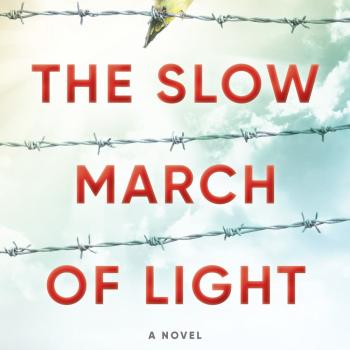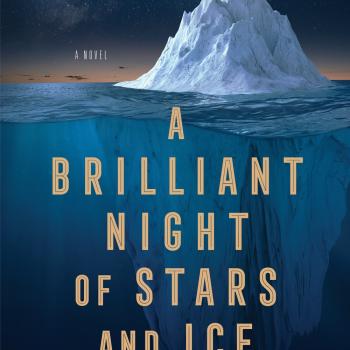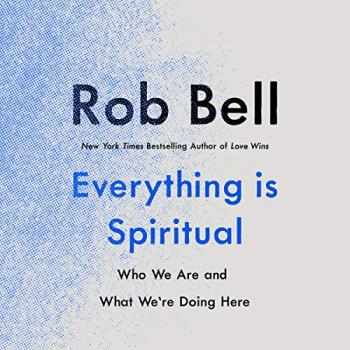Hindu blogger Padma Kuppa is the next responder in the Patheos Book Club blogger roundtable on God is Not One. Following her review, she raises a question about the Hindu chapter for author Stephen Prothero; his response follows her post below.
The subtitle of God Is Not One – The Eight Rival Religions that Run the World – and Why Their Differences Matter – unsettled me, coming from academic Stephen Prothero whose book Religious Literacy highlighted what I always experienced – the ignorance people have about other faiths. I have been fortunate throughout my life to have experiences which enriched my understanding of my own faith as well as that of others. Both books were given to me, each by a Christian interfaith mentor and fellow peace activist, one from MI and one from the East coast. So you may understand as a Hindu American interfaith activist who wants to help develop interreligious understanding, why the subtitle bothered me.
That there was a limit to the number of religions covered was surprising but easily understood in the first pages of the book. The author does say “Much is missing here…” And there is an acknowledgement that, while the “religions appear here in discreet chapters, none really stands alone,” but I didn’t get a sense that this interdependence brings religious communities together. There is a tension emanating from the “rival” in the title that in a work that seeks to “replace naïve hopes of interreligious unity with deeper knowledge of religious differences.”
As I read the book, I could understand the justification provided that the eight religions are presented in the order of their influence, although why each was great wasn’t as convincing (great doesn’t mean good, by the way). The presentation of Islam as the first chapter didn’t seem right, given the impact of Christianity’s proselytizing efforts around the world and over hundreds of years. Yet Islam seems to be the one with the most contemporary impact – and the fact that it is presented first is a great conversation starter for anyone reading this book.
The four-step approach to understanding the eight religions identified – Islam, Christianity Confucianism, Hinduism, Buddhism, Yoruba religion, Judaism, Daoism and a “brief coda on atheism” – is explained in the intro. I still wonder about this simplification, and what someone who is not religiously literate will interpret, since the nuances are missing.
While daunted by Prothero’s assessment of some of my heroes – think Karen Armstrong, Ramakrishna, Gandhi, lumping them into a category he identifies as “perennialists, who identify all religions as one” – I agree that he is spot-on in his assessment of the need to move into Interfaith Dialogue 2.0. He clearly lays out the need for genuine dialogue across difference, particularly now when our world is filled with religious and antireligious name calling. He reiterates again the need for religious literacy, and the need to reckon with our religious differences. But he raises Eboo Patel’s Interfaith Youth Core as an example, where “Patel actively discourages IFYC participants from discussing politics and theology.” And yet a few sentences later, he says we should find “a secular way to talk about religion, with some measure of empathetic understanding.”
I was somewhat perturbed by Prothero’s presentation of the chapter on my faith, that which the Western world has identified as Hinduism. (He got the dissonance we have about the name Hinduism right). It is a family of faiths, it is not an organized religion, and yet, there it is, as number four on his list. In fact, on page two of the intro, he calls [Hindu] Swami Sivananda’s writing [that the essentials of all religions are the same] a dangerous, disrespectful and untrue sentiment. He calls Hinduism The Way of Devotion, and identifies Hindus as being god-besotted. Rather than give fair hearing to the new scientific evidence that is at opposition to the Aryan invasion theory, he identifies it with Hindutva, and the Hindu nationalist movement. He references Hindu nationalists several times, in a country where the impact of corrupt politics and predatory proselytizing is easily visible (I go almost every other year to spend time with family) – even while India still works to stay true to its pluralistic past. I could go on, as an insider offended by the inaccuracies, the clinical approach with which he explains my belief system and that of almost a billion others. But there are many points where he is spot-on again: acknowledging the resilience of Hinduism -“Rather than repelling new ideas, Hindus are forever absorbing them;” “if you are confused at this point, you are not alone;” or identifying God as both “nirguna Brahman” and “saguna Brahman.” He quotes scripture, stories and philosophers and seems to explain what a paradox this faith is. But in the end, he simplifies it beyond my understanding. My faith is not only that of devotion. He states, “It affirms that neither priestly sacrifice (a poor description of the karma yoga path I walk) not philosphical knowledge (jnana yoga) is necessary for release from the bondage of samsara.” Being Hindu means I have a multifaceted approach to faith – with many ways, many yogic paths that I and millions of Hindus weave into our lives.To me, he remains an academician with a Western lens who doesn’t understand what the late Indian president S. Radhakrishnan tried to explain in his 1939 publication Eastern Religions and Western Thought. In fact, Indian scholar C. Rajagopalachari said these words while introducing one of my favorite hymns, the famous Bhajagovindam. “The way of devotion is not different from the way of knowledge or jnana. When intelligence matures and lodges securely in the mind, it becomes wisdom. When wisdom is integrated with life, and issues out in action, it becomes bhakti. Knowledge, when it becomes fully mature, is bhakti. If it does not get transformed into bhakti, such knowledge is useless tinsel. To believe that jnana and bhakti, knowledge and devotion, are different from each other, is ignorance.”
The hardest part of reading this book for me came not as a Hindu, but as an interfaith activist. Yes, we need humility, the awareness that we don’t have all the answers, and we need interfaith dialogue 2.0 – but it will not come without interfaith dialogue 1.0, where people can discover common ground. Reconciliation of our religious differences – like any other differences – requires tact and compassion. The cross pollination and the deepening of one’s own faith that comes with inter-religious knowledge is not offered up for consumption – think Gandhi’s following the principles of ahimsa found in the Hindu saint Patanjali’s Yoga Sutra, which inspired MLK to follow his Christian path of turning the other cheek with even more dedication. The book didn’t offer me hope – that religious literacy as gained through a book will help those of us who practice the world’s religions (or belief systems) find ways to solve problems created by other people who practice these same religions (or belief systems). Instead, it offered me reality: that religious differences matter, that we must continue to advocate for what we believe in, that we must continue to create friendships across faith lines, and nurture the idea that we should treat others as we wish to be treated.
Question for author Stephen Prothero:
Your understanding of my faith falls short when you say (p.137, paragraph 2) that “It affirms that neither priestly sacrifice (a poor description of the karma yoga path I walk) not philosphical knowledge (jnana yoga) is necessary for release from the bondage of samsara.” Being Hindu means I have a multifaceted approach to faith – with many ways, many yogic paths that I and millions of Hindus weave into their lives. How can we Hindus help those with a Western lens understand what S Radhakrishnan tried to explain in his 1939 publication Eastern Religions and Western Thought?
Some background: The Hindu saint (7th century) Sri Adi Shankaracharya is believed to have composed the ‘Bhaja Govindam‘ during his famous pilgrimage to Kasi (Benares) and fourteen of his disciples are said to have accompanied him. When he was walking along the streets of Kashi, he was saddened to see an elderly man diligently studying Sanskrit grammar. At this advanced age, he should have spent time worshiping God, instead of on learning a language. This prompted Sri Sankara to come out with this composition, a sort of rebuke to a foolish way of doing things. The Acharya urges the man to turn towards God and sing His glory instead of trying to learn a language. I have always revered what 20th century Indian scholar C. Rajagopalachari said about the composition:
“Adi Sankaracharya wrote a number of Vedantic works for imparting knowledge of the Self and the Universal Spirit. He also composed a number of hymns to foster Bhakti in the hearts of men. One of these hymns is the famous Bhajagovindam. The way of devotion is not different from the way of knowledge or Jnana. When intelligence matures and lodges securely in the mind, it becomes wisdom. When wisdom is integrated with life, and issues out in action, it becomes Bhakti. Knowledge, when it becomes fully mature, is Bhakti. If it does not get transformed into Bhakti, such knowledge is useless tinsel. To believe that Jnana and Bhakti, knowledge and devotion, are different from each other, is ignorance. If Sri Adi Sankara himself who drank the ocean of Jnana as easily as one picks water from the palm of one’s hand, sang in his later years hymns to develop devotion, it is enough to show that Jnana and Bhakti are one and the same. Sri Sankara has packed into the Bhajagovindam song the substance of all Vedanta, and set the oneness of Jnana and Bhakti to melodious music.”
Stephen Prothero responds:
You seem to be objecting here to my discussion in “God is Not One” of Hinduism’s so-called three disciplines (yogas). As I said at the beginning of my Hinduism chapter, the Hindu tradition is multi-faceted, with more internal discussion and disagreements than any other great realiion. So I am not surprised that your opinion about these three yogas differs from what I wrote, or for that matter from what other Hindus think. Still, I think what I wrote was correct.
What I wrote was that Hinduism offers its practitioners many ways to move from the problem of samsara (the cycle of life/death/rebirth) to moksha (spiritual liberation). One is karma yoga (the discipline of action), which began with the ritualistic actions of priests in fire sacrifice and was later reinterpreted (thanks to, among other, Gandhi) to refer to the ethical actions of ordinary people. Another was the jnana yoga (the discipline of wisdom) of wandering sages and such scriptures as the Upanishads. Then came the third and most popular, bhakti yoga (the discipline of devotion), which, as I wrote, “affirms that neither priestly sacrifice nor philosophical knowledge is necessary for release from the bondage of samsara. All that is needed is love.”
I am not sure precisely what your objection to this rendition of the three yogas is, since you do not say, but you seem to be intimating that in your spiritual life you do not choose one or another of these approaches but draw on them all, just as Sri Adi Shankaracharya combined wisdom and devotion. That is all well and good, and there are of course Hindus throughout Indian history who have done just that.
This combination of yogas is by no means surprising, given the Hindu tendency, which I stress at the beginning of this chapter and throughout, on a both/and rather than an either/or strategy. Hindu intellectuals such as Radhakrishnan, and especially those influenced by the Vedantic tradition you invoke, do tend to elide the differences not only between these yogas but also between the world’s religions. At any rate, my point was not that Hindus choose one yoga at the expense of all others, since as I argue in “Religious Literacy,” even if your religion focuses on loving God you have to KNOW something about that God and then ACT in some manner toward Him or Her. My point was that there are at least three ways to the religious goal here, rather than just one.
Regarding Radhakrishnan, I used to teach his “Eastern Religions and Western Thought,” and in her world religions course at Harvard my mentor Diana Eck assigned that book as her one text on Hinduism.
Read more responses to the book God Is Not One, as well as more conversation between our bloggers and author Stephen Prothero here.
Return to the Patheos Book Club for more resources and conversation on God Is Not One.












